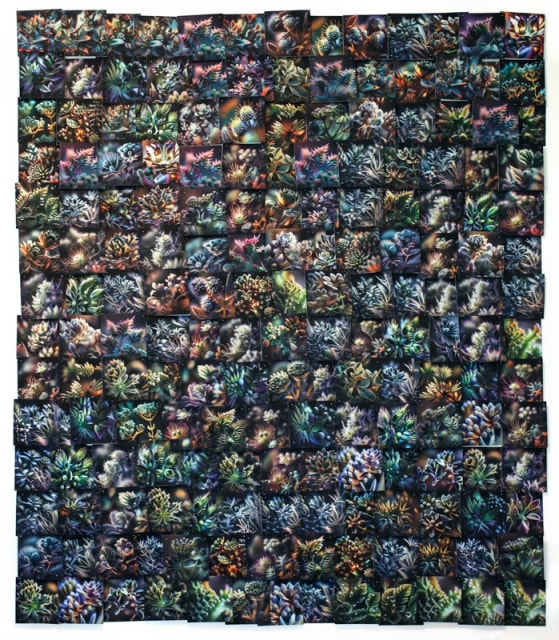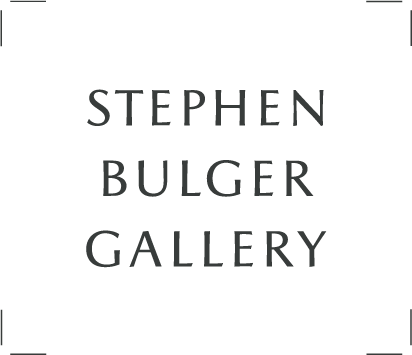Opening Reception: Saturday, September 9, 2-5pm
Guided Tour of the Exhibition with Sanaz Mazinani: Saturday, September 9, 3pm
Exhibition Dates: September 9 – November 11, 2023
Stephen Bulger Gallery is pleased to present An Impossible Perspective, our fourth solo exhibition of work by Sanaz Mazinani. Expanding from Mazinani’s previous research on the relationship of photography to perception, media distribution, and consumption, An Impossible Perspective is an investigation into artificial intelligence (AI) and machine learning. In this work, Mazinani presents imagery of plants as both metaphor and conduit for an artistic speculation on the future of humanity’s relationship to creativity, truth, and labour.
To develop this series, Mazinani devised a unique methodology using a set of AI tools. She worked with computer programmer Millan Singh Khurana to create custom code with an intricate set of procedures aiming to mimic human intelligence to create the resulting artworks. Investigating how these technologies render intelligence, Mazinani worked with DALLE-2 and Midjourney to generate hundreds of images based on ideas such as the relationship between humankind and the natural world. Image-sets including the artist’s own photographs were then sequenced using newly trained machine vision and natural language processing models to analyze the relationships between them. Over 15,000 images were analyzed and sorted to create the individual artworks for An Impossible Perspective,based on concepts such as Realness, Artificiality, and Truthfulness. Once sequenced and labeled, the printed images were pinned to backing-board according to AI sequencing instructions to create collages composed of hundreds of images.
An important component of this series is the use of the artist’s body to assemble the artworks on points along the x, y, and z axes as determined by the software. Mazinani’s labour, actions, and aesthetic choices are influenced by the AI software’s computational outcomes that direct the placement of each image. For example, in Real or Not, the images on the top-left corner progress from ‘most real’ to ‘least real’ along horizontal rows, according to the score generated by the software. In this way, the computational mind becomes a tastemaker in both artwork-creation and layout. The shift in autonomy during the process of making each work results in a chronic tension between the tech-centred methodology Mazinani had set for the production, and her own aesthetic and intuitive desires. The process of enacting the AI outcomes is augmented by hand-cutting each image into a unique shape, inscribing the process with a physical and human creative act. These paper forms resembling clothing pattern pieces are then affixed with dressmaker pins, in reference to domestic labour.
An Impossible Perspective demystifies and takes control of AI processes, offering a platform for public discourse. Mazinani states that, “while making this project over the past year and a half, I found that the more I nudged the AI, the more predictable and simplified the outcomes of the generative artworks became.” Contributing to a dialogue that critically and creatively engages with this technological movement, these artworks demonstrate the capacity and limitations of this technology. An Impossible Perspective highlights the importance of using AI technologies as tools to support our work, as opposed to becoming the primary means to produce a result.
This exhibition was generously supported by the Canada Council for the Arts.
Mazinani is an Assistant Professor of Studio Art in the Department of Arts, Culture, and Media with a graduate appointment at the Daniels Faculty of Architecture, Landscape, and Design at the University of Toronto. She holds an undergraduate degree from Ontario College of Art & Design and a Master of Fine Arts from Stanford University. Her work has appeared in solo exhibitions at institutions including the Asian Art Museum in San Francisco, California, the West Vancouver Museum, and Triton Museum of Art in Santa Clara, California. Her projects and public art installations have been featured in venues throughout Canada as well as China, France, Germany, Guatemala, India, Iran, Switzerland, the UAE, UK, and USA.


